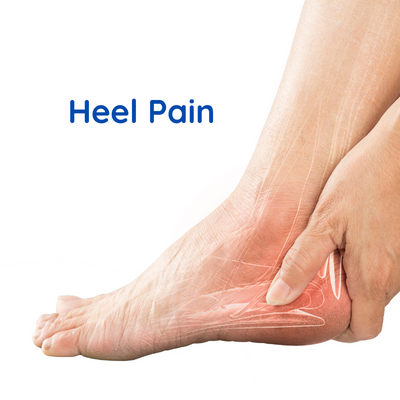Heel Pain
Table Of Contents
- Introduction
- Understanding the Roots of Heel Pain
- Recognizing the Signs and Symptoms
- Effective Relief Strategies for Heel Pain
- Preventing Heel Pain
- Conclusion
Introduction
Heel pain is a common foot condition that can be caused by various factors, including injury, inflammation, or structural abnormalities. Whether it’s due to plantar fasciitis, Achilles tendinitis, or other underlying conditions, heel pain can significantly impact mobility and quality of life. In this blog post, we’ll explore the causes, symptoms, and effective relief strategies for heel pain, offering insights into how you can overcome this challenging condition and regain comfort in your feet.
Understanding the Roots of Heel Pain
Heel pain can stem from several different sources, including:
- Plantar fasciitis: Inflammation of the plantar fascia, a thick band of tissue that runs along the bottom of the foot.
- Achilles tendinitis: Inflammation of the Achilles tendon, which connects the calf muscles to the heel bone.
- Heel spurs: Bony growths that develop on the underside of the heel bone, often associated with plantar fasciitis.
- Bursitis: Inflammation of the bursae, small fluid-filled sacs that cushion the joints and tendons in the foot.
- Stress fractures: Tiny cracks or breaks in the bones of the foot, typically caused by repetitive stress or overuse.
Recognizing the Signs and Symptoms
The symptoms of heel pain can vary depending on the underlying cause, but may include:
- Pain or tenderness in the heel, especially with weight-bearing activities or prolonged standing.
- Stiffness or limited range of motion in the foot and ankle.
- Swelling, redness, or warmth around the heel or along the bottom of the foot.
- Sharp or stabbing pain that worsens with activity and improves with rest.
- Difficulty walking or bearing weight on the affected foot.
- Pain that is most severe in the morning or after periods of inactivity.
Effective Relief Strategies for Heel Pain
Treating heel pain often involves a combination of conservative measures and lifestyle modifications, including:
- Resting the affected foot and avoiding activities that exacerbate symptoms.
- Applying ice packs to the heel to reduce pain and inflammation.
- Taking over-the-counter pain relievers, such as ibuprofen or acetaminophen, to alleviate discomfort.
- Wearing supportive shoes with cushioned insoles and good arch support.
- Using orthotic inserts or heel cups to provide additional support and cushioning.
- Performing gentle stretching and strengthening exercises to improve flexibility and muscle strength in the foot and calf.
- Undergoing physical therapy or rehabilitation to address underlying biomechanical issues and improve gait mechanics.
- Considering corticosteroid injections or shockwave therapy for targeted pain relief and inflammation reduction.
- Exploring alternative therapies, such as acupuncture, massage therapy, or chiropractic care, for additional pain management and symptom relief.
Preventing Heel Pain
While it may not always be possible to prevent heel pain entirely, there are steps you can take to reduce your risk and promote foot health:
- Wear supportive shoes with proper arch support and cushioning, especially during high-impact activities.
- Gradually increase the intensity and duration of your workouts to avoid overuse injuries and stress fractures.
- Maintain a healthy weight to reduce pressure on the heels and minimize the risk of developing plantar fasciitis or heel spurs.
- Stretch your calf muscles and plantar fascia regularly to maintain flexibility and prevent tightness.
- Listen to your body and address any foot pain or discomfort promptly to prevent the development of chronic issues.
Conclusion
Heel pain can be a frustrating and debilitating condition, but with the right approach, it is often manageable. By understanding the causes, symptoms, and effective relief strategies for heel pain, you can take proactive steps to address your symptoms and improve your foot health.
“At Arunalaya Healthcare, we pride ourselves on being the best physiotherapy center in Delhi. Our dedicated team of experts offers top-notch physiotherapy treatment tailored to your needs. Experience the difference with the leading physiotherapy clinic in Delhi area. Our commitment to excellence ensures that you receive the best physiotherapy care possible. Trust Arunalaya Healthcare for the best physiotherapy treatment in Delhi. Our advanced physiotherapy solutions set us apart as the premier choice for your rehabilitation needs. When it comes to physiotherapy, our center stands out as the best in Delhi. Choose Arunalaya Healthcare for comprehensive physiotherapy solutions that deliver results. Visit Arunalaya Healthcare today and discover why we are the best physiotherapy center in Delhi.”
Heel pain relief | Plantar fasciitis treatment | Managing Achilles tendinitis | Symptoms of heel pain | Causes of foot pain | Best shoes for heel pain recovery | Preventing foot and heel injuries | Exercises for heel pain relief | Shockwave therapy for foot pain

